
Before we traveled to Peru, we didn’t have this city on our radar at all. But we can tell you now: don’t miss Arequipa! We
The land of Incas, Pisco, Alpacas, and of course Machu Picchu. We spent three weeks in this beautiful country and it’s one of our favorites. It’s so diverse that you can visit the Andes, the Ica Desert, and the rainforest in the three-country corner with Peru, Colombia and Brazil all in one trip. We’ll show you our perfect itinerary and must-do’s.

Best time to travel: Peru has 28 out of the existing 32 world climate zones. So you’ll find a nice area to visit all year round. But if you’ll follow our route we would suggest you go between May and October during the dry season. The rainy season takes place from November til April. We traveled to Peru from the end of November to the middle of December 2021 and have to say we had a pretty good time. We didn’t have a lot of rain and because of the low season also not a lot of tourists (probably also because of covid).
Transportation: As some may already know, we made our round trip with Peruhop. This company specializes in Peru (and Bolivia) round trips with their typical red buses. There are a wide variety of routes here. We booked the longest path from Lima via Arequipa and Lake Titicaca to Cusco. It is the so-called „Full South to Cusco“ route.
The good thing about Peruhop is that you are flexible at any time and can change your onward journey to the next city flexibly up to one day before departure. Also, you will always be picked up at your hostel, so you don’t have to worry about how to get to the bus station. On the website, you can also always find the corresponding departure times.
Even if you don’t decide on Peruhop, we suggest taking the bus around Peru. All the buses are punctual, high quality (for South America), easy and safe. And you’ll meet other backpackers. If you are short on time you might consider flights between the bigger cities.
Route: In our opinion, traveling from Lima to Cusco is the perfect route to see all the highlights of Peru and slowly get used to the altitude. Altitude sickness should not be underestimated, fortunately, we had no problems with it. Cusco, for example, is at about 3,400m above sea level, more than 400m above the highest German mountain, the Zugspitze. Also, heights of almost 5,000m above sea level are not uncommon if you want to visit the Colca Canyon or the Rainbow Mountains and Machu Picchu.
Get connected: If you start in Lima and are staying in Miraflores, you can easily buy a sim card at a Claro store there. This can take a little longer though. Sometimes there are long queues or the system fails. We were able to buy one in Arequipa a bit away from the center because the system was down in Lima. This cost only 6$ and there were some GB included.
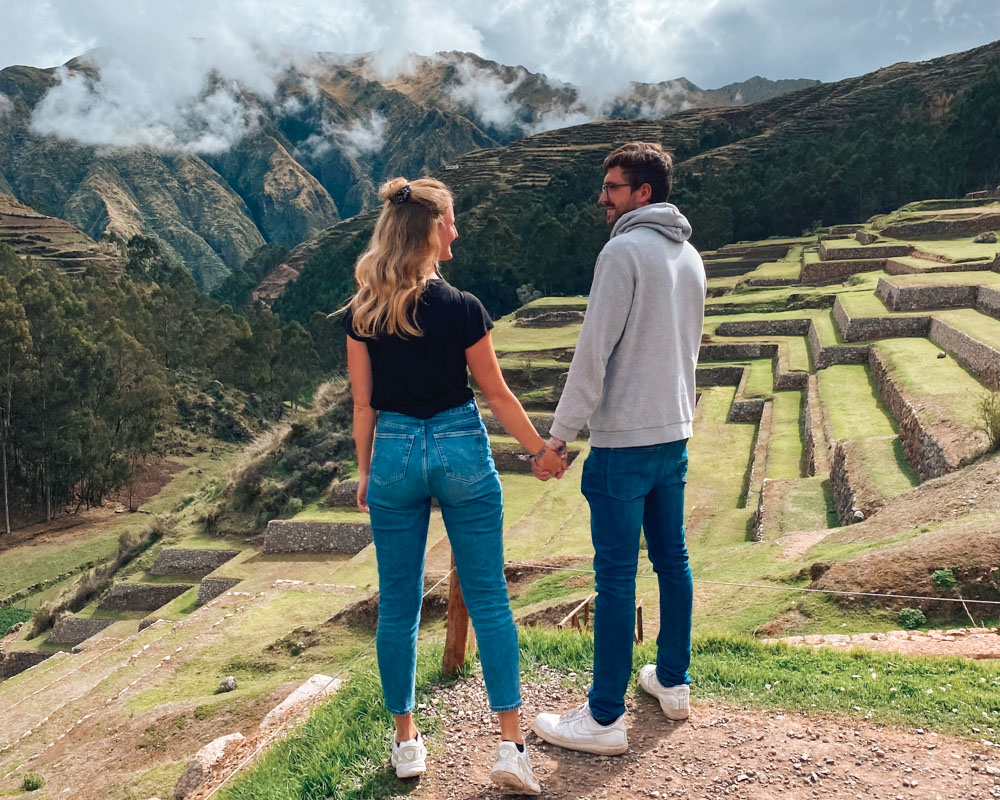
Start your journey in the capital of Peru. It is by far the biggest city in Peru with nearly 9 million inhabitants. Wander through the historic old town or the artist area of Barranco. Also stroll along the Malecon in Miraflores, which is located above the cliff. It offers a wonderful view of the Pacific Ocean and the skyline of the city. Although, a lot of people say you can skip Lima when in Peru, we think it’s the perfect start for your Peru adventure.
We had nice accommodation in the Miraflores district, the Alpes Kennedy Park Lima, which you can only book at Hostelworld. It has a nice roof terrace where breakfast is served. You’ll also find a pool and football table there, as well as a pool table. We paid 12€ per person per night in a private room.
Lima in general is not the safest city, but there is no need to be afraid either. We never felt unsafe at any time, but if in doubt, take an Uber in less crowded areas or at night. In Miraflores, you usually don’t need to be afraid at night, because it is always quite busy and it is the most touristy and safest neighborhood.
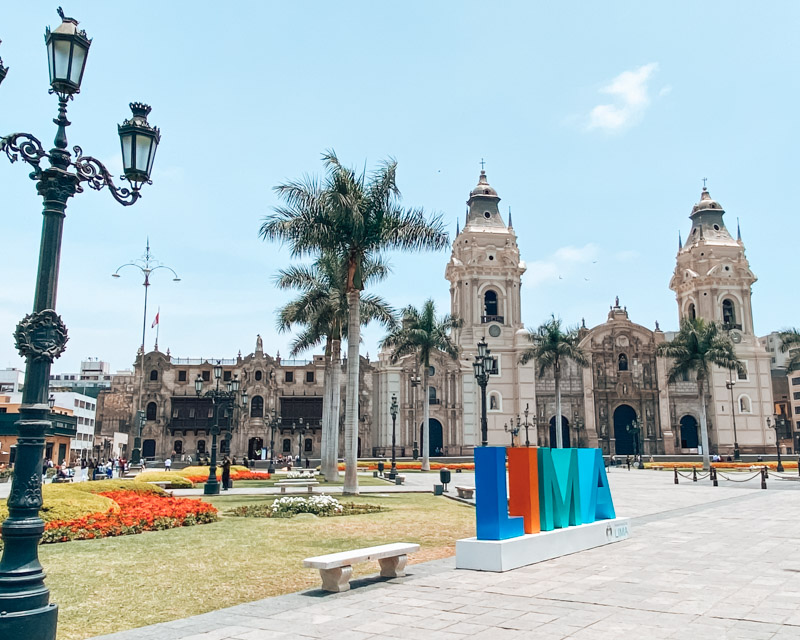
The best way to explore the city is with a free walking tour, which starts in Lima’s historic old town. However, we were even picked up by the guide at the hostel and then took the train together to the old town. There are several providers, we did the tour with Lima by Walking and can only recommend it.
The tour started at Plaza San Martin and went via Plaza Mayor/Plaza de Armas with the cathedral to the Rimac bridge with a view of San Cristobal Hill, which is home to Lima’s „most famous“ favela. After the tour, we had lunch together. Even though you often hear that Lima is ugly and doesn’t have much to offer, we can’t confirm that.

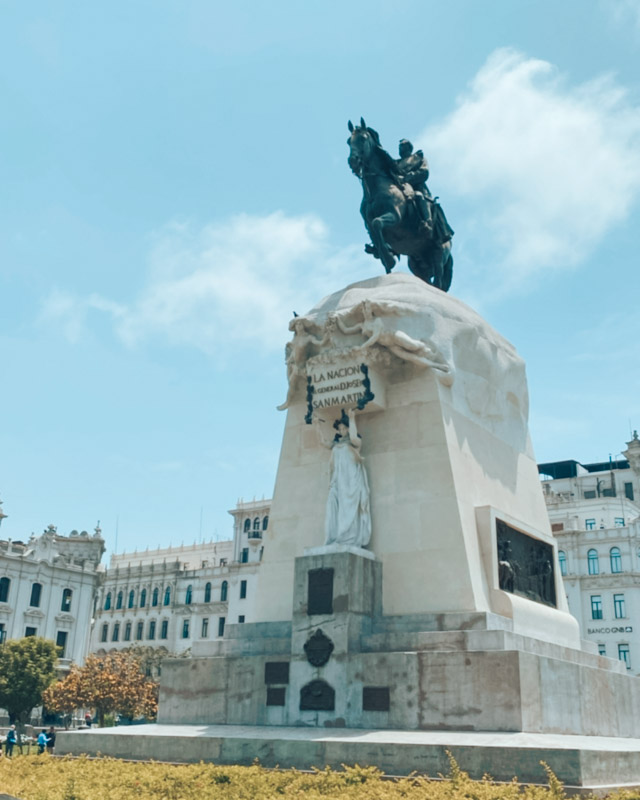
In Lima, you’ll also find two restaurants that are in the top 10 in the world: The Central and the Maido. We met people, who had a great time at Maido. Be sure to make a reservation several weeks before you arrive in Lima because it’s always crowded. A full wallet doesn’t hurt either. A more affordable option for all kinds of food in Miraflores is Mercado San Martin. Try the national dish of Peru: Ceviche!

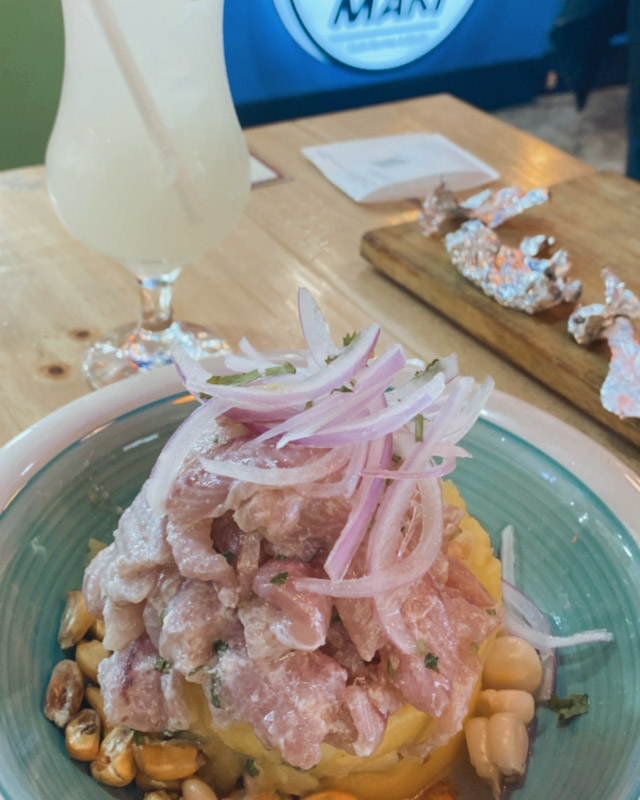
Our next stop was Paracas. A trip to the National Reserve is already included with your Peruhop ticket. The coastline is imposing and the beaches are unique as well. We also saw hundreds of flamingos in the wild. You can also rent a bike or quad and explore the national park on your own, as friends of ours did.


Or you take a boat trip to Islas Ballestas, the „poor man’s Galapagos“. We saw penguins, sea lions, and a million sea birds, that torpedo themselves into the water trying to catch the fish. Read our Paracas blog post to get our pro tip for the Ballestas islands.

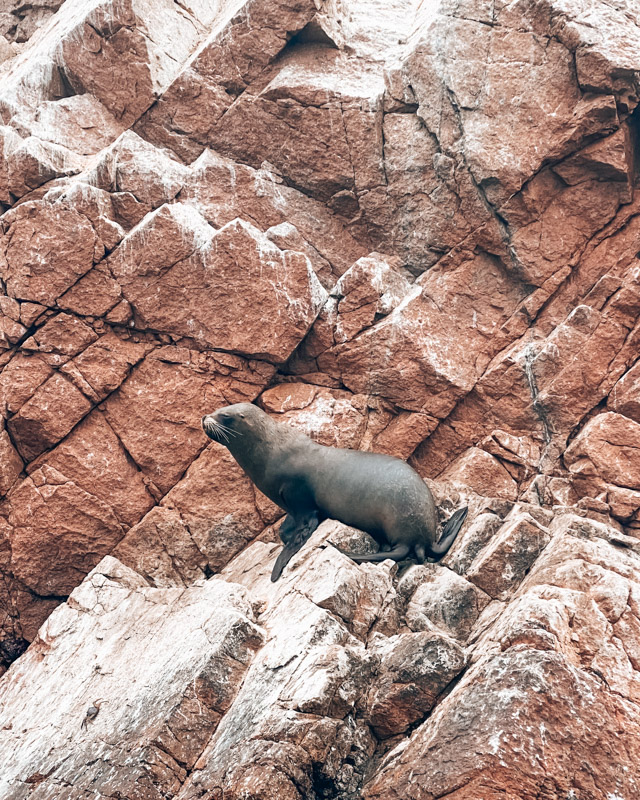
The way from Paracas is quite short and takes only a good hour. Huacachina is the only desert oasis in South America and from the high sand dunes, you can see wonderful sunsets. You have a stunning view of the oasis and the dunes. Also, the buggy tour through the dunes is a must-do and it must not be missed on any Peru trip. Check out our full Huacachina guide here!
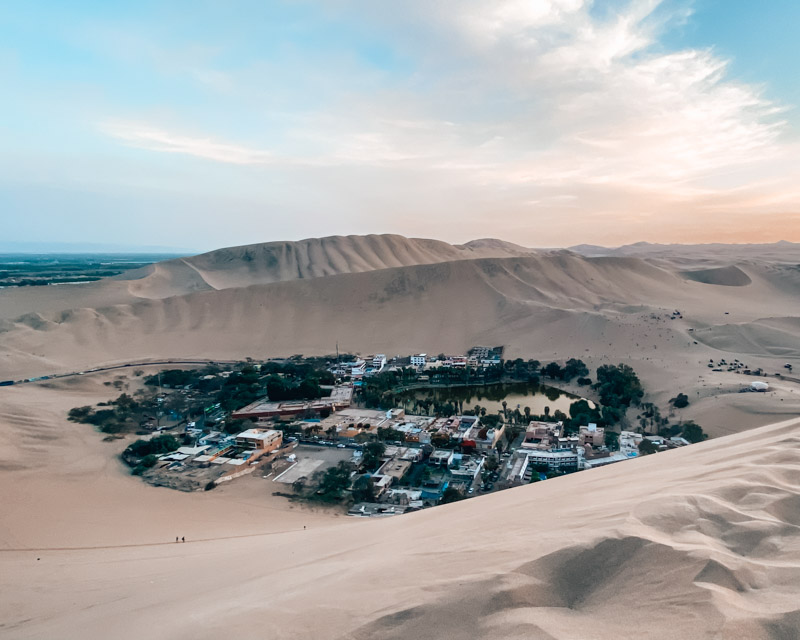
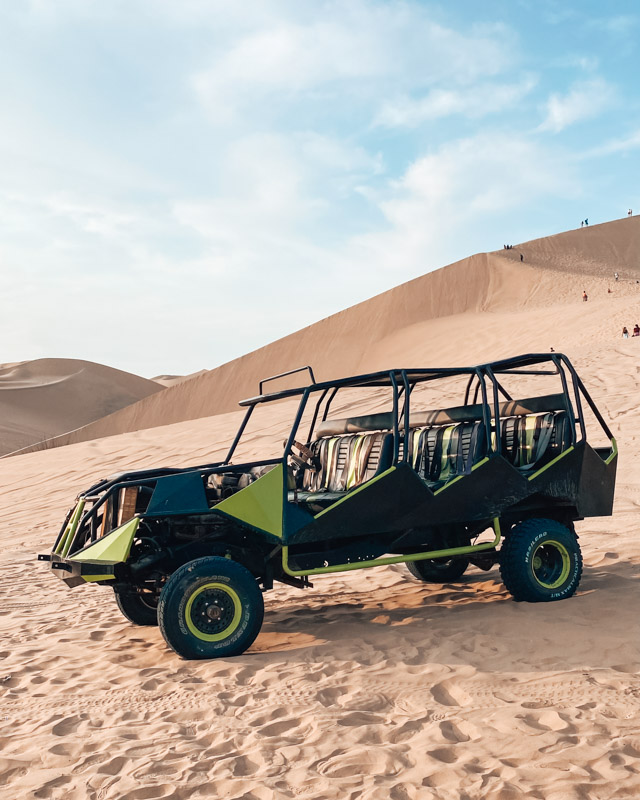

On the way from Huacachina to Nazca and further to Arequipa, you stop at the Nazca lines, a series of drawings carved into the ground of the desert over 2000 years ago. Climb up to the top of the 13 meter tall viewing tower to see three of the Nazca Line drawings such as a tree and hands. Admission is included with your Peruhop ticket here as well, otherwise, the tower costs $5 admission.
The lines were officially made a UNESCO World Heritage site in 1994. People are still not quite sure how these were formed but they were probably created as part of fertility rituals by the indigenous people. They vary in size from 30 meters to 200 meters and often take on the form of animals such as monkeys, lizards, and sharks among others. You can even take a flight over the lines because they stretch for many miles (about 80km/50 miles). But for only 30 minutes and approximately 80$ we skipped it.
From the city of Nazca, which is not so worth seeing, we took the night bus to Arequipa. The night buses in Peru were all quite comfortable and you can tilt the seats back up to 160 degrees in some cases. Some luxury buses even allow you to recline the seats 180 degrees.
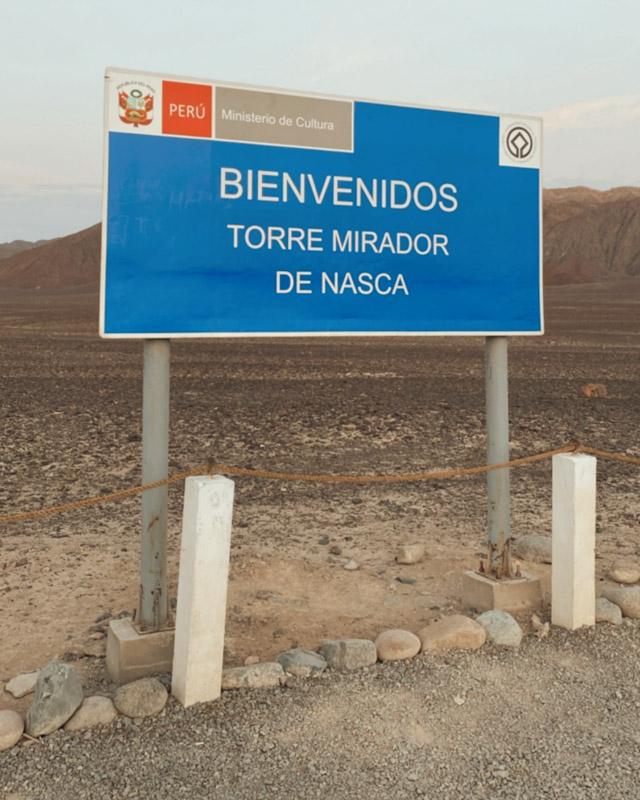
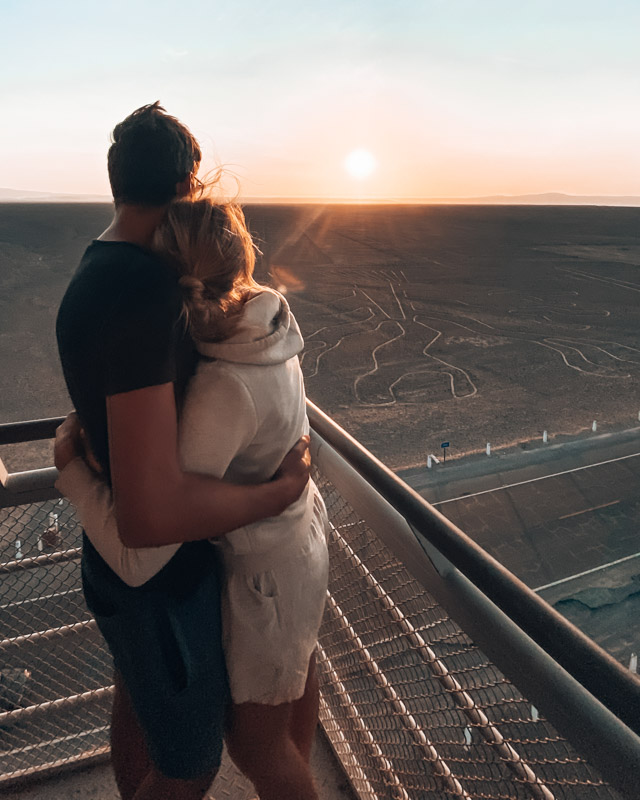

10 hours after Nazca you will arrive at Peru’s most underrated city. Arequipa also called the white city, is already 2,300m above sea level and is surrounded by the Misti and Chachani volcanoes. Before we traveled to Peru, we didn’t know whether to skip it. But we can tell you now: don’t miss Arequipa! We were totally surprised and loved it because there are so many different things to do here. Find our article about Arequipa here.
One trip we did was to a quarry just outside of Arequipa. It’s called Canteras de Sillar, which provided the white volcanic stone, that gave the city its nickname. The gate looks a bit like the little sister of Petra in Jordan, don’t you think?

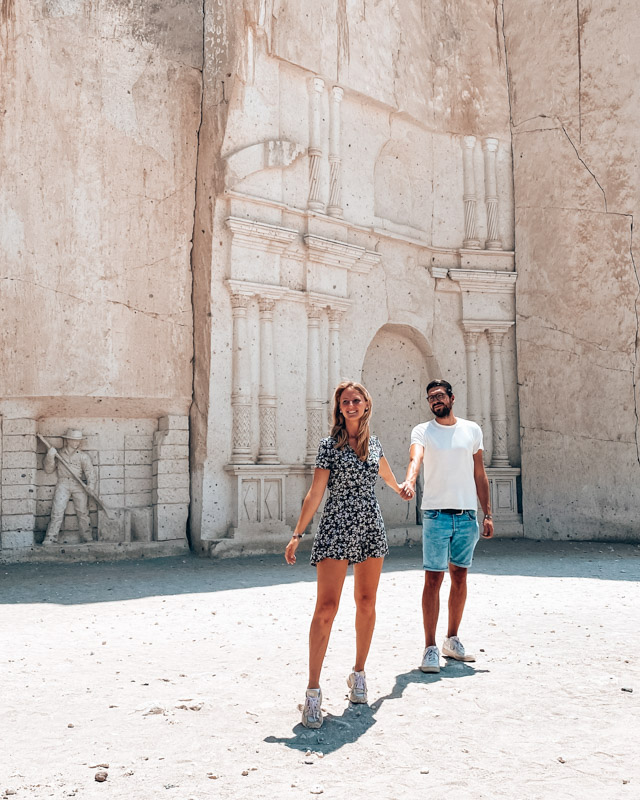
A day trip from Arequipa is the Colca Canyon, the second deepest canyon in the world, even deeper than the Grand Canyon. Be prepared for a long day: you’ll be picked up from your hotel at 2:30 a.m. During the tour, you’ll see smoking volcanoes, a lot of alpacas, and be at altitudes of nearly 5,000 meters. A highlight is the flight of the Andean condor!

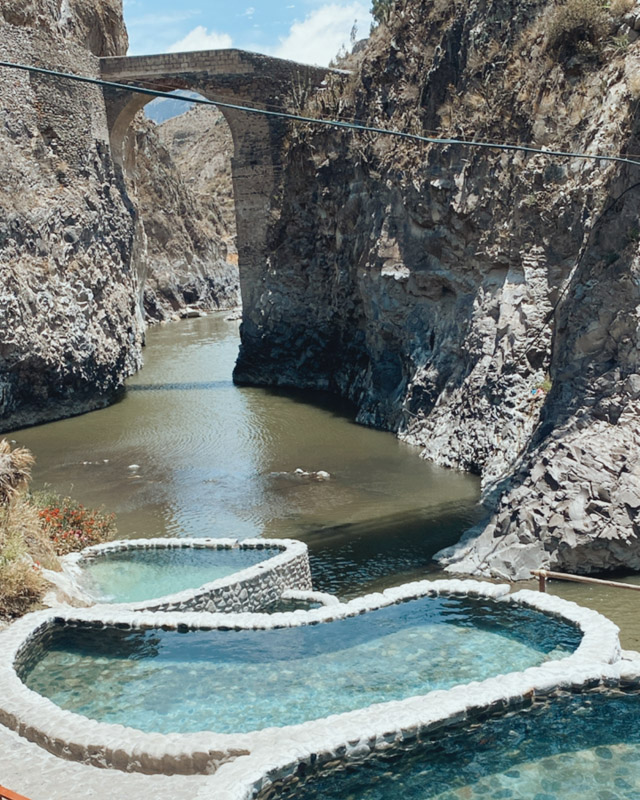
From Arequipa, we continued by night bus to Puno in 5h. Puno itself is not on everyone’s must-sees and does not have much to offer. To be honest we didn’t like the city at all. But it’s the place to be if you wanna visit the famous Lake Titicaca.
Lake Titicaca is the highest navigable lake in the world and lies at over 3,800m. Peru shares it with Bolivia. Our actual plan was to continue to Bolivia, but unfortunately, the land borders were closed because of Covid.
We were picked up directly from the bus and continued with a small private boat over the lake. We stayed with a family in one of the legendary floating villages, which was a super experience (Uros Quantany Lodge). It was a bit more expensive (34€ per person), but we had a great cabin with superb views over the lake and all meals included. Unfortunately, our Spanish is not the best, but after more than three months in Latin America, it was at least good enough that we could communicate a little. We even tried on traditional clothes, which was fun.
We also took a trip to one of the bigger islands on the lake, called Taquile, where locals performed traditional dances and sold homemade products. We would say rather skip the boat tour and spend a little more time with the local families. For us meeting, those heartwarming people was totally worth it. It’s so chilled and silent and isn’t it cool to say, you spent a night on such a famous lake? If you need to kill some time in Puno before the bus ride to Cusco, we can recommend the Rupha Café.

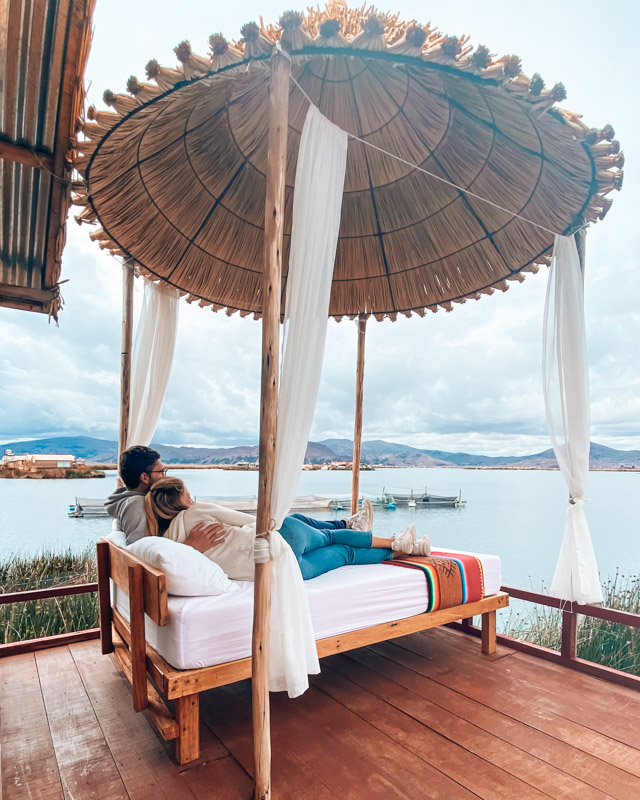
From Puno to Cusco it’s a 6-7h trip by night bus. Cusco is the heart of the Inca culture and it is located at around 3,400m above sea level. It’s the gateway to Machu Picchu, the Rainbow Mountains, or the Sacred Valley.
Cusco is a fantastic city with beautiful architecture, cathedrals, museums, and some of the best restaurants in the country! So it’s easy to spend a week here. You will find more insider info here (coming soon). You will find many highlights of Peru around this town, so it’s worth staying longer.

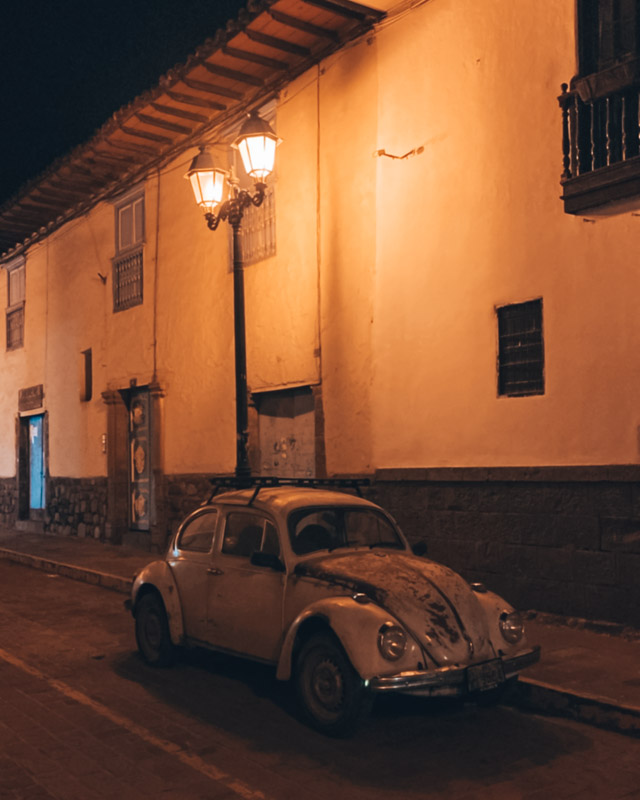
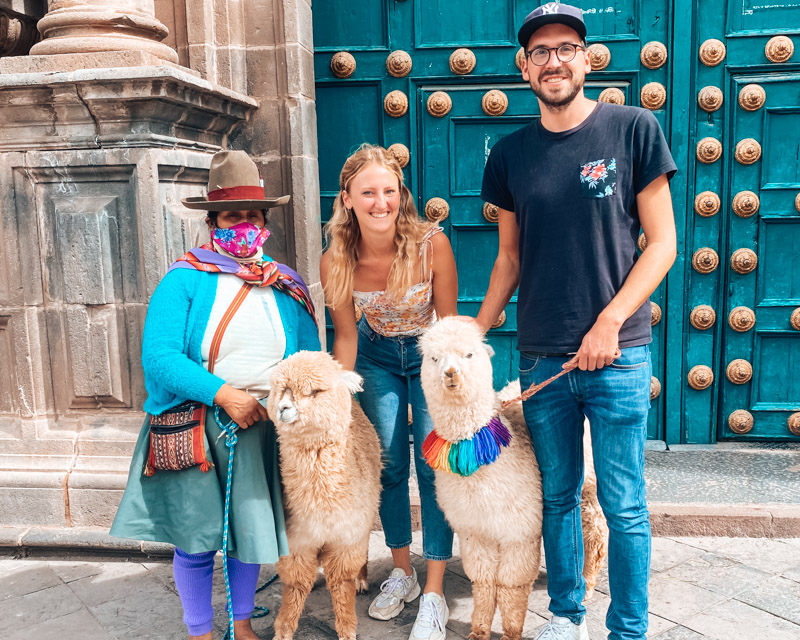
From Cusco, you can make a wonderful trip to the Sacred Valley. Here you pass the salt mines of Maras, Moray with its circular terraces, Chinchero, Ollantaytambo, and Pisac. Be sure to negotiate when booking a tour, as the prices are way higher in the beginning because Cusco is a very touristy place with all the different day trips.
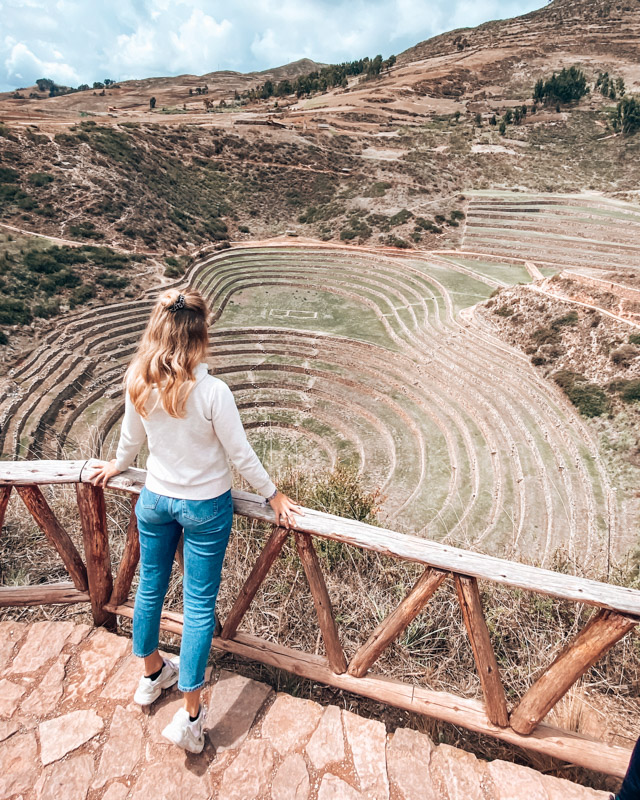

Another day trip from Cusco and our second Peru highlight are the Rainbow Mountains. Almost all tour operators in Cusco offer tours to Vinicuna, the most famous one. But many people don’t know that there is another, or more likely three. The rainbow mountains of Palccoyo are way less visited, but not less awesome!
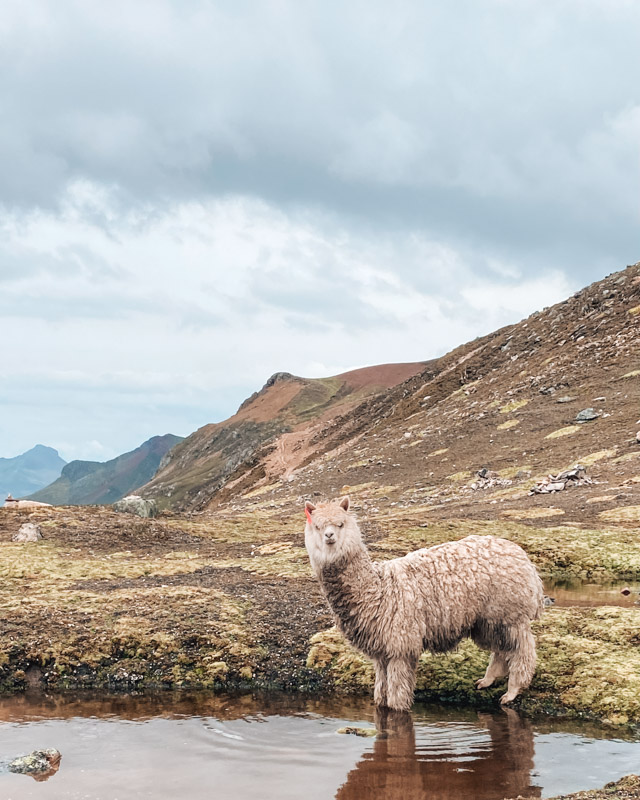
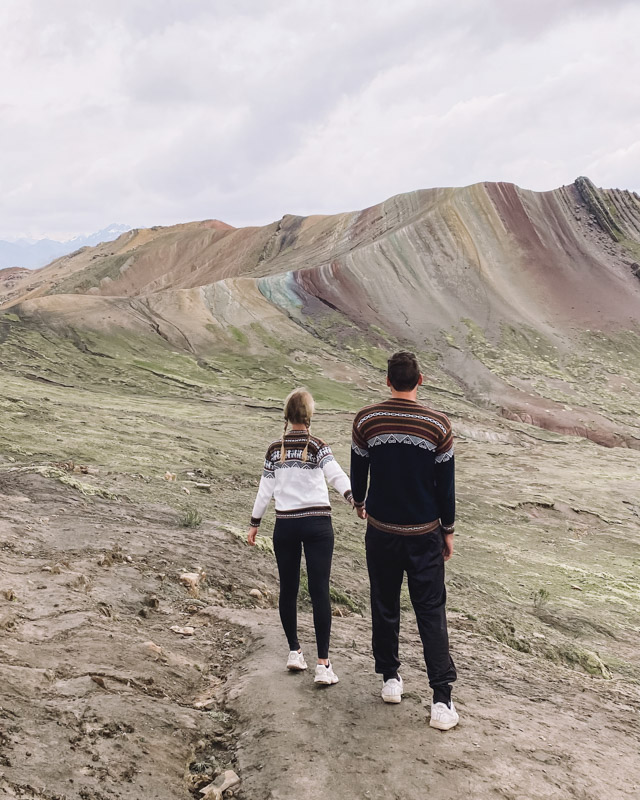
Why does one actually come to Peru? Probably because you absolutely want to see Machu Picchu. It was similar for us and it really didn’t disappoint. It is one of the seven new wonders of the world and just magical.
We were a little unlucky with the weather on the day we visited, but somehow it’s still extremely beautiful and mystical, don’t you think? If you want to know, how to get there, just look for our Machu Picchu guide (coming soon). You can book the tickets on the official homepage.
Pro tip: Many people recommend buying the tickets several weeks or even months in advance. We bought the tickets only a few days before. You can always see the availability on the official website, which means you can follow the capacities live, so you are more flexible here.
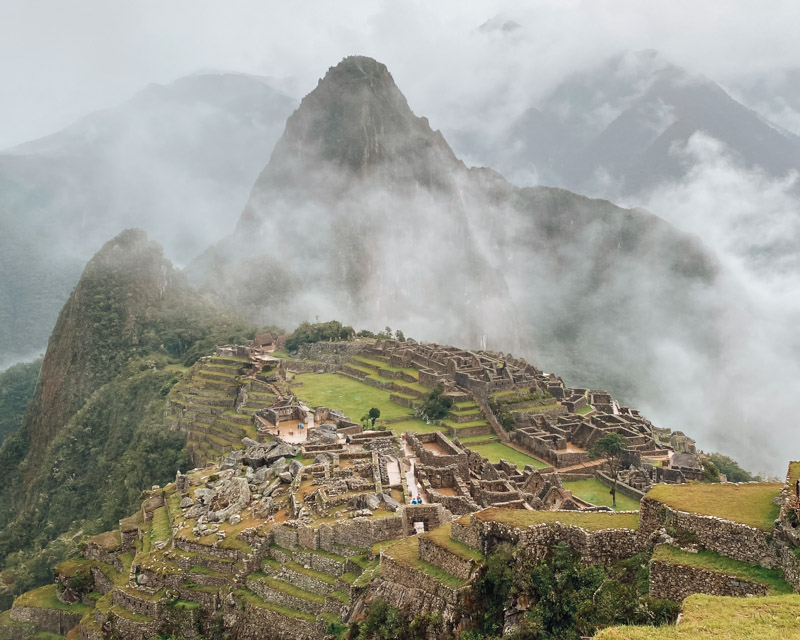

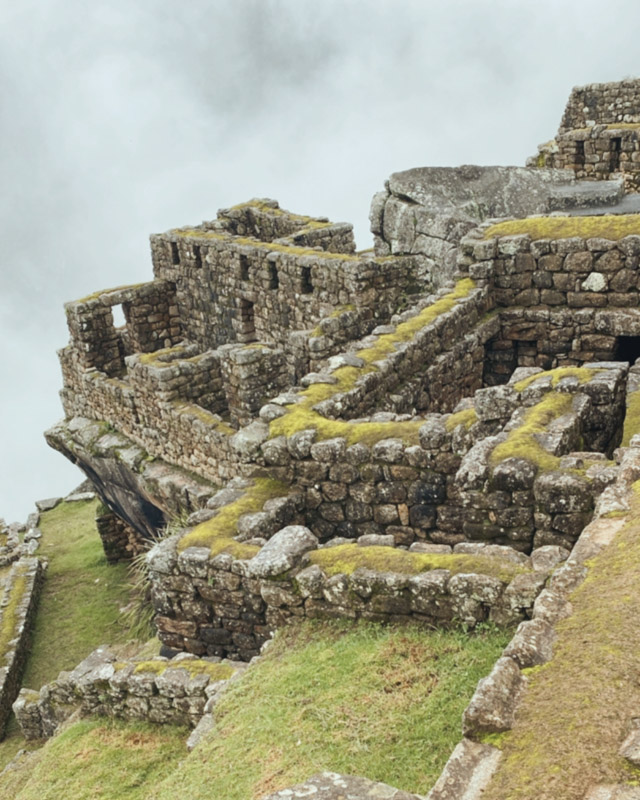
We loved Peru, it is just a mega-diverse country with super beautiful nature. We also think it’s good for South American beginners because Peru is quite safe and easy to travel around. We spent about 1,100€ per person on-site in three weeks (plus flights) and we didn’t miss anything. If you wanna know what we spend in detail check out our Instagram post here. We will definitely come back someday to see places we haven’t seen yet, and maybe Machu Picchu with sunshine.
Of course, it’s impossible to see everything of Peru in three weeks. What we would like to see next time:
– the jungle around Iquitos and the Amazon River
– the Laguna Humantay, another day trip from Cusco
– Peru’s north and the beaches
– Huaraz with the Laguna Paron and Laguna 69.
Then these platforms might help you. We use them for all our travels and if you use them, too by clicking the link we earn a small fee. Yet, you don’t pay extra, but we can keep this site running. Win-win!

Before we traveled to Peru, we didn’t have this city on our radar at all. But we can tell you now: don’t miss Arequipa! We

Paracas is a small village on the coast of the Pacific Ocean in Peru. It’s a paradise for birdwatchers and nature lovers. Go on a

Huacachina – it looks like a fairy tale from 1001 nights. Sand is everywhere, and one small green isle is among the dunes. It seems
Such an awesome blog post!